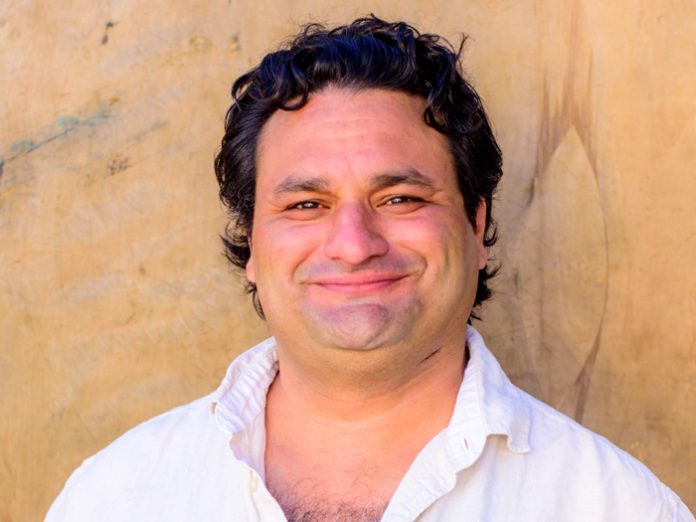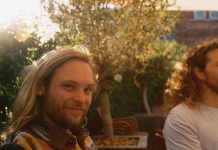Cyrus Bozorgmehr is Head of Communications at Arcadia, the pioneering performing arts and events company. His role at Arcadia spans public relations and the creative development of narratives and themes. His work as a consultant across the wider creative industries recently saw him publish a book about Wu Tang Clan’s notorious single-copy album project, to which he acted as senior advisor. ‘Once Upon a Time in Shaolin’ was named a 2017 Book of the Year by Rolling Stone magazine. Arcadia will be celebrating its 10th anniversary at a one off festival at London’s Queen Elizabeth Olympic Park this May Day Bank Holiday.
Recent years have seen a radical transformation in festival identity. Where once festivals had a collective identity, and stages were defined solely by the music they hosted, in today’s landscape individuality is everything.
This shift has been partly creative and partly economic; both driven by a desire to keep evolving and the stark necessity of developing a ‘brand identity’ in a sea of financially precarious ventures. It simply isn’t enough any more to chuck up a couple of stages and book a strong line-up – not least because some version of that line-up is on repeat up and down the country. With newer acts struggling for oxygen in a saturated media landscape, festivals are still dominated by many of the same names that headlined 10 or even 20 years ago.
As the sheer, primal joy of piling into the middle of a field and dancing till dawn began to normalize, even the last great wave of total abandon – the rave movement – began to take on the hallmarks of consumerism. Bookings grew increasingly absurd as ever more artists played ever shorter sets and line-up size assumed an almost Freudian quality.
With stagnation setting in and the classic stage format taken increasingly for granted, production began to evolve into a key barometer of identity. And once that door had been cracked the possibilities began to snowball.
It was precisely this re-imagining of what a stage could be that inspired me to join Arcadia. The traditionally linear stage format was reshaped into a 360 degree circle with fire at its centre, creating a totally different crowd dynamic. Not only was sculpture at its heart, but those sculptures were built from repurposed military hardware, transforming technologies used for destructive ends into unifying experiences. That added an additional dimension of storytelling beyond the character of a giant alien spider alone, exploring deeper philosophical ideas about the relationship between technology and human intent, but without dragging out a soapbox and banging on about ‘serious issues’.
A study published in the September 2014 issue of Psychological Science by Amit Kumar, Matthew Killingsworth and Thomas Gilovich demonstrates that people value purchases of experience more than objects. It’s a pattern driving festival attendance today; people feeling part of a community, a story, something new, something different and something that engages a feeling of otherworldliness.
It’s a notoriously bad idea to try generalising about wider festival demographics, especially as so many now cater to an older audience for whom festivals are more than just a youthful phase. But I do think it’s fair to say that festivals are touchstones of identity – free, uninhibited spaces in which young people boxed up in conventional realities seek liberation, a feeling of collective solidarity and some reflection of themselves.
And for a long time, the very act of going to a festival – any festival – was enough to fulfil those desires, but as they became increasingly ingrained in mainstream culture, standing in a field under the stars with all your mates listening to your favourite artist began to verge on conventional.
A bigger story was needed, a more dramatic context for those artists and a reappraisal of whether it was about creating interesting new artist showcases or taking it a step further and seeing the artist as part of a holistic experience. By making the artist one element in a wider tapestry, it suddenly wasn’t about a sequence of individual elements any more but a completely immersive adventure.
Themes, set design and a broader fusion of the performing arts have become increasingly vital to a festival’s identity, and with second and third generation festivalgoers bursting with ideas to evolve the experience they’d loved themselves, the economic need to lock in strong branding dovetailed with an explosion of creativity.
Glastonbury’s South East corner was hugely pioneering in this respect, incubating Arcadia as well as the likes of Shangri La and Block9 because Michael Eavis was prepared to support the kind of underground, DIY creativity that opened a new dimension of individuality and rekindled a sense of wonder. Just as Glastonbury now sells out without a single artist announcement, more and more events and festivals are trying to move in that direction – where people buy into the festival itself rather than exactly who’s playing.
Intricate, immersive sets sprang up in mid-sized festivals and giant fantasy walls towered over huge dance music events that didn’t have bands to look at, and where DJ’s re-enacting the Cristal crucifixion were wearing thin. Costumes, narratives, comedy, circus, walkabouts and characters populated these new fantasy worlds – where the escapism of being in a field had morphed into the escapism of being in a parallel world.
Full blown immersive, theatrical productions like Arcadia’s Metamorphosis show demonstrate just how far that can be taken within a festival context. With a 50 tonne mechanical, fire breathing spider in the middle of a 360 degree arena, robotic spiders the size of cars crawling above the crowd, creatures swooping from the sky, lightning crackling across the arena and 50 foot fireballs igniting with a visceral gut punch – the concept of an immersive experience has an almost limitless degree of potential.
Storytelling takes other forms too – the build of an event, the ethos of an event, the environmental consciousness of an event and the venues events are staged in. Arcadia’s partners for our forthcoming London festival, LWE, have long pioneered unusual and character laden urban spaces to contextualise the experiences they create – whether a motorway flyover for Junction 2 or the metal monumentality of Printworks. It’s an echo of acid house and rave’s heyday where each new warehouse or factory shaped the experience – architecture itself as part of the party’s fabric. Going back to the same dark, featureless club every week was almost unthinkable after bus depots, Victorian rail sheds and rusty factories, and it feels like festivals are now at a similar point.
There’s no doubt that genuinely innovative and impeccably ‘curated’ line-ups still hold great power, but with connections to specific festivals becoming more tribal, storytelling has never been more important. And the means of projecting that story – what that festival is and what it represents – through ethos, sets, production, performance and theatre, are more diverse and thrilling than ever.
Festivals really aren’t just about music any more – they’re about stepping into an experiential portal forged through the interconnection of a vast artistic spectrum. With most alternative realms being purely digital these days – from gaming to VR – festivals are now one of the few environments that offer a three dimensional journey through alternative worlds. How convincing those worlds are and how long this trend can be sustained will depend on quality, innovation and authenticity – and perhaps in the long run – whether they are purely about fantasy or speak to deeper themes within us all.





